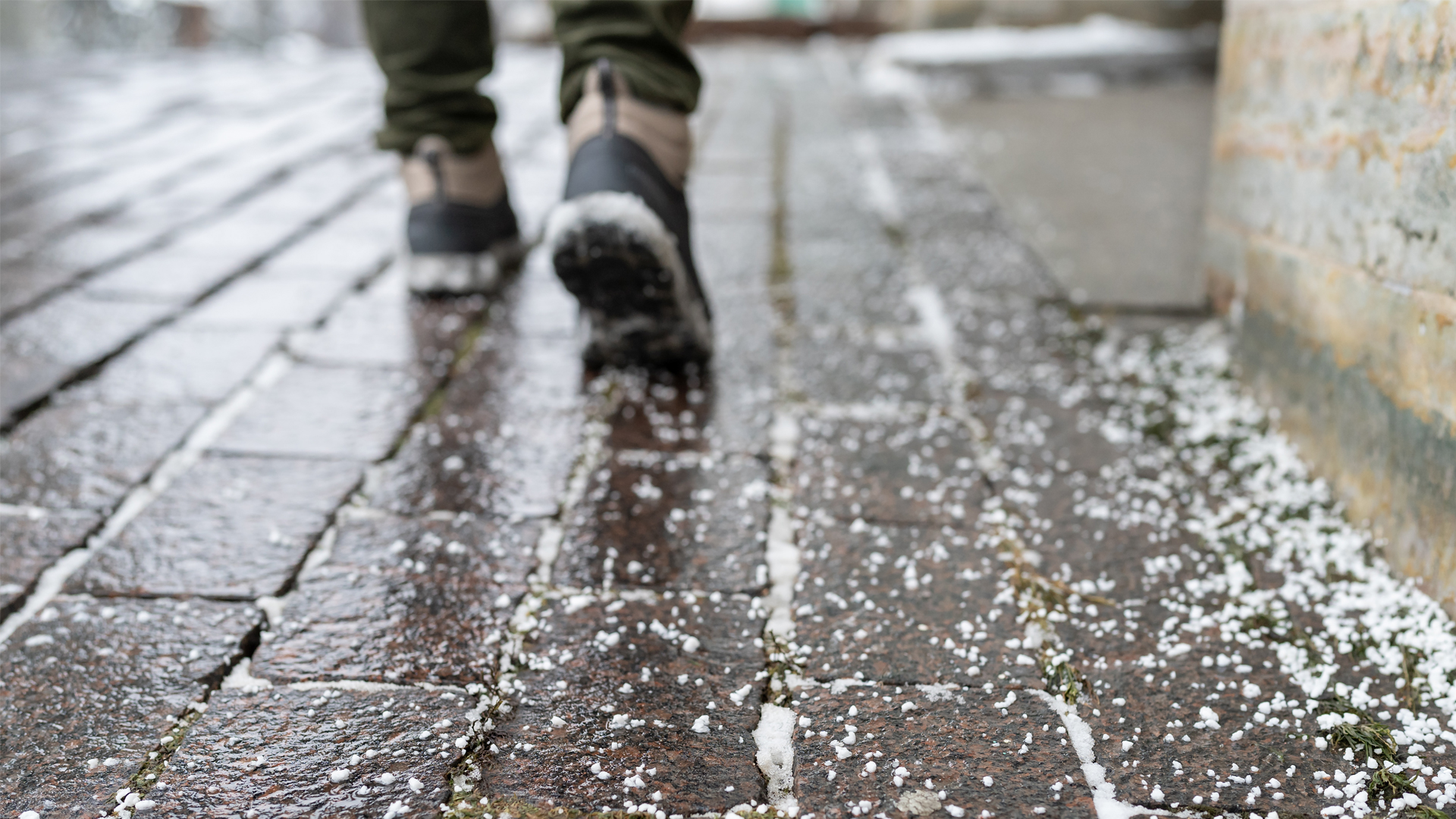Snow and Ice Prevention and Removal

Winters can bring snow, ice, sleet, runoff, and other conditions that regularly induce slips and falls, a frequent source of liability claims at educational institutions. Slips and falls are also the leading cause of non-fatal emergency department visits in the United States. Whether your campus gets annual snowfall or you’re in a mild climate with generally warm winters, it’s important to prepare for snow and ice events. Once your institution becomes aware of a dangerous condition, such as the potential for snow or ice accumulation on campus, your legal duty of care to respond reasonably to the hazard is triggered.
Prevention
Create a snow and ice removal policy that includes:
- The primary person responsible for coordinating snow and ice removal
- Instructions for maintaining emergency access
- Reference to your campus closure policy and any snow- or ice-specific closure requirements
Promote the prompt remediation of snow and ice by considering these actions:
- Track potential storms through the National Weather Service (NWS). Familiarize yourself with terms the NWS uses to classify weather conditions in your location. Each NWS office knows the area and will issue Warnings, Watches, and Advisories based on local criteria. Search your zip code on the NWS website regularly to learn of upcoming weather events.
- Whenever weather reports predict a snowstorm or freezing conditions are imminent, alert relevant maintenance teams and outside contractors that your institution needs slip prevention and snow removal services.
- When using a contractor for snow removal services, verify work has been done by following up after snow falls or there’s a specific request for the contractor’s services. Your institution’s maintenance personnel can investigate all reports of snow or ice so temporary protective measures occur, such as cordoning off slippery or otherwise unsafe areas.
- Keep the chain of command for response short. Avoid situations in which maintenance personnel must wait for authority before they can investigate individual reports of snow or ice. Give these personnel direct authority to investigate and take remedial measures.
Anti-Icing, De-Icing, and Abrasive Agents
Plan your de-icing strategies well before a storm. Frequent snowfall presents a particular challenge for outdoor surfaces. Because salt used to prevent ice hastens concrete deterioration, some concrete vendors encourage the use of other de-icing agents, such as sand. However, while sand can create traction, it generally won’t remove ice and snow.
Before using ice mitigation materials, research whether they’re effective for your climate and needs. Additionally, know the difference between anti-icing, de-icing, and abrasive agents.
Anti-icing agents: Apply these before the temperature drops; they help prevent ice from bonding with pavement. Salt brine solutions are being tested now as a more environmentally friendly option to limit the amount of salt flowing into nearby freshwater tributaries after a snowstorm. Unlike with de-icing agents, you must apply anti-icing agents like brine before the storm begins. Additionally, brine only has been confirmed to work when pavement temperatures are above 20 degrees.
De-icing agents: They’re the most common method of ice mitigation other than physically removing snow and ice with shovels and plows. Most de-icing agents consist of chemicals mixed with salt or chloride. Agents have different melting points, effects on concrete, environmental impacts, and costs. The Minnesota Pollution Control Agency summarized several studies into a table of popular de-icing agents. Weigh these factors when choosing which de-icing agent is best for your institution. For example, schools in significantly cold locales may select Calcium Chloride despite its high propensity to initiate concrete corrosion. Alternately, schools in warmer locations concerned with concrete sustainability may choose Potassium Acetate despite the additional expense.
Abrasive agents: These items, such as sand, improve traction without removing ice. Don’t use abrasives as a replacement for de-icing agents or physical snow and ice removal.
More From UE
Help Prevent and Respond to Slips and Falls: Lessons From Claims
About the Author
-

Melanie Bennett, Esq., ARM-E
Senior Risk Management Counsel
In her role on UE’s Risk Research team, Melanie dives into timely topics affecting education. Her areas of expertise include protecting minors, enterprise risk management (ERM), technology accessibility, and athletics. Prior to joining UE, she interned at the U.S. Department of Education’s Office for Civil Rights. Melanie serves on the Higher Education Protection Network’s (HEPNet’s) Board of Directors.